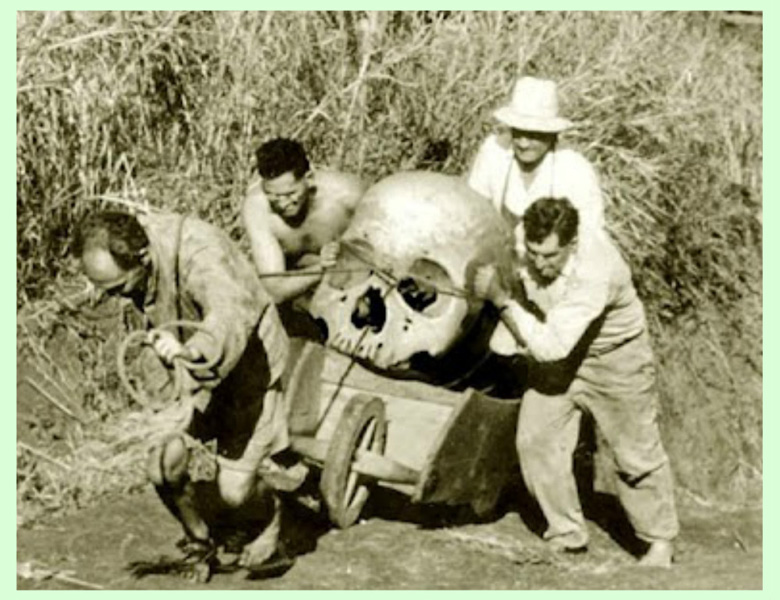Pauli Arbarei: The Land of Giants 0 Comments

The topic really fascinates me: did the Giants exist in Sardinia or they didn’t? Why are the Tombs of the Giants called this way? Who were the Giants of Monte Prama?
In 4000-1600 BC the average height was 162 cm in the Sardinian man and 150 cm in the woman. The anthropometric data of the Sardinians' stature had a peak precisely between 1200-900 BC where it reached the average height of 166 cm for men and 155 cm for women. In 1978 it went up to 171 cm for men and 160 for women. Thanks to the eradication of malaria and tuberculosis and a more varied diet, average height today is growing.
The Pauli Arbarei inhabitants are convinced that the giants really existed, a 3-hour drive from Gabbiano Azzurro Hotel & Suites, where they say that extraordinary human bones have been found, belonging to real giants, but secreted by official history. Why? Luigi Muscas, sculptor and painter, states that, living in Pauli Arbarei’s countryside, while he was helping his grandfather to graze the sheep, he sheltered from the rain in a cave where he saw a big skeleton of at least four metres. He ran back to the village to tell his grandfather about the discovery and escorted him to the cave. The grandfather already knew about huge bones and other tombs existing in the countryside and told him that ten thousand years earlier in the "SA CONTISSA" area, there would have been a population of ten thousand inhabitants, with nobles, ten court ladies and a king. "
Luigi Muscas is not the only one talking about the giants, or rather the “Giogantinos”. Farmers who claim to have found, while ploughing, human skeletons of extraordinary dimensions unfortunately ended up in the wrong hands. The list of those who support the same story, albeit with some variations, is as long as it is incredible. But the question we ask ourselves is “Why on earth has such an interesting discovery been hidden and classified instead of being made known? Something that has to do with the tendency to keep a low profile on the whole Nuragic history that does not appear in school books where it should have a rightful place instead?
Muscas, born in '62, rightly argues that the cultural and economic rebirth of Sardinia will necessarily have to go through the enhancement of the findings, of which it is assumed that there are as many hidden undergrounds and highlighted by drones, georadars and magnetometers.
It's said of an ancient lineage that came about 12,000 years ago. It was the lineage of the Giants, very tall beings who were able to travel between earth and sky, from where legend says they arrived. A very evolved lineage, which taught the islanders all sorts of things and which sailed on every route known then. As evidence of these voyages, large iron circles, the "rings" with a diameter of 30-40 cm and more, have been found numerous and believed to be used to dock the ships. The large circles have a peculiar characteristic: they are made of a type of iron that does become rusty.
It was the lineage of the Giants, very tall human beings who were able to travel between earth and sky, from where legend believes they arrived.
The "mystery" of the Giants in Sardinia, which the archaeologists Murru and Atzeni define as "stories and rumours", however, are reflected in the childhood memories of many inhabitants of the Pauli Arbarei area. Those bony artefacts, which the farmers handed over to the authorities or to the parish priest of the town, disappeared into thin air and they lost track of the artefacts (bones, objects, jewels, artistic works, etc.) since.
But a large molar tooth is still in Muscas' possession: did it belong to a giant or to a large herbivore? In the archaeological area of Sant’Anastasia, in Sardara, near Pauli Arbarei, there have been bones surfacing but are not accessible because they are cordoned off to keep the public away. Muscas, however, claims he has seen the bones close at hand when they were unearthed and that there were shinbones high as a man of five feet tall.
We wonder that serious researches will soon reopen the archaeological sites (such as the one on the top of Corte 'e Baccasa, which has been closed and covered with tarpaulins for years) and, by studying these finds in detail, they will be able to give us certainties about these fascinating archaeological mysteries.
“When he dreams, man is a giant who devours the stars”. (Carlos Saavedra Weise)
--
Written by Daniela Toti
Teilen Sie uns Ihre Meinung mit!